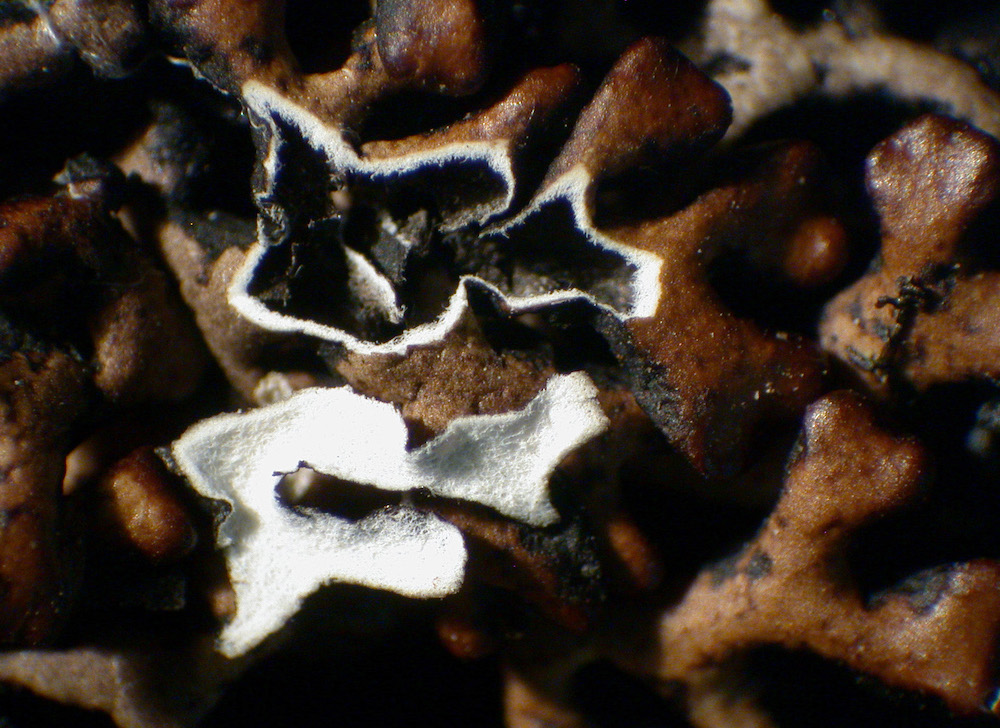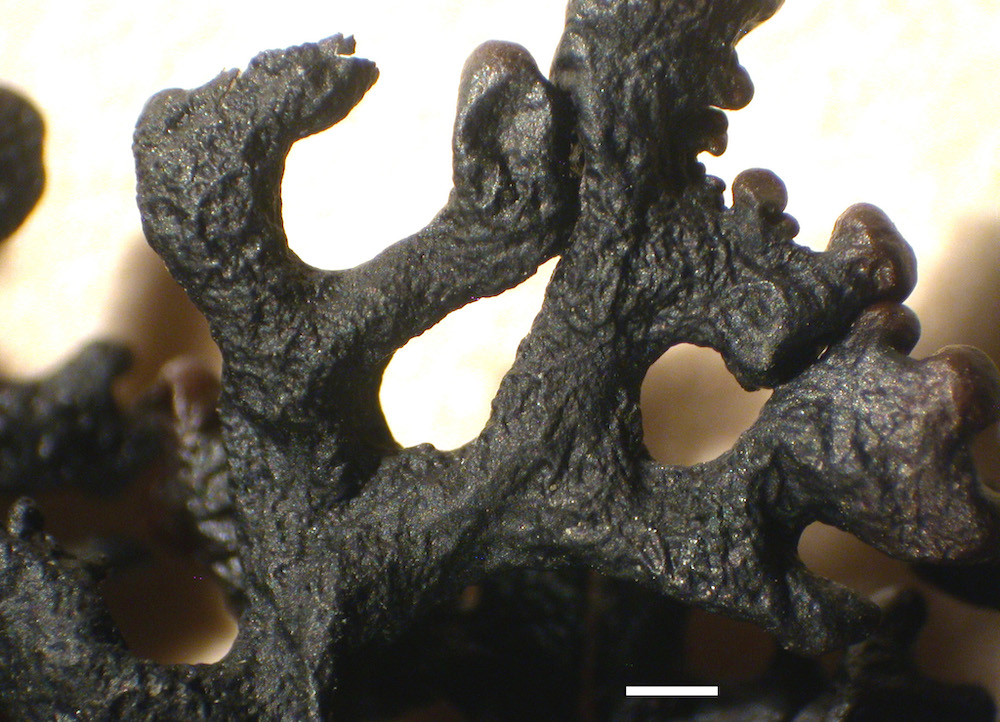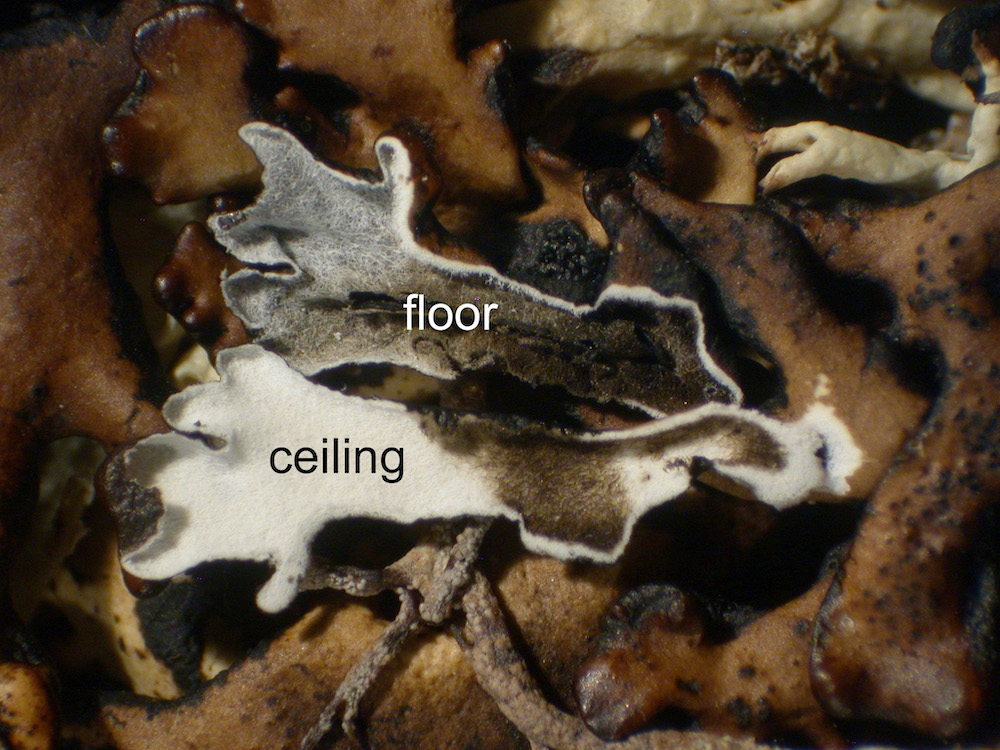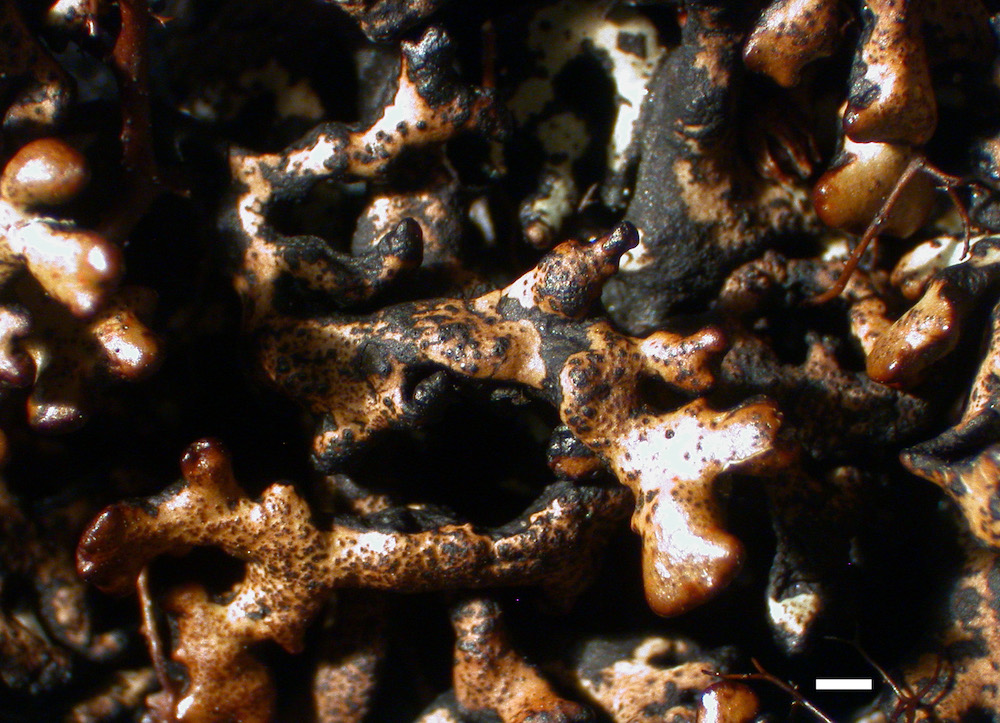Click on Characteristic name for explanation. Click on image for larger version.
Overview
| Synopsis:
| Loosely appressed to imbricate, often forming planar sprays of lobes, less often suberect, upper surface dark brown, glossy, with no apparent reproductive structures; medulla K-, KC+ orange red, P+ orange red.
|
| Distribution:
| Seward Peninsula in Alaska and Chukotsky Peninula in Russia; as yet unknown from outside the Bering region.
|
| Habitat:
| arctic tundra
|
| Range:
| Arctic, Subarctic, Alpine
|
| Other Diagnostics: | Dark brown glossy with horizontal growth form and P+ and no apparent reproductive structures
| | Substrate Notes: | On mosses or detritus, or rock, rarely on bark or wood.
| | Abundance in North America: | Rare
| | Substrate: | Rarely
| | Host: | N.A.
| | On Rock: | Occasional
| | On Moss/Detritus/Sod: | Typically
| | Authority: | Krog
| | References: | McCune (2008)
| | Synonymy: | None
|
|
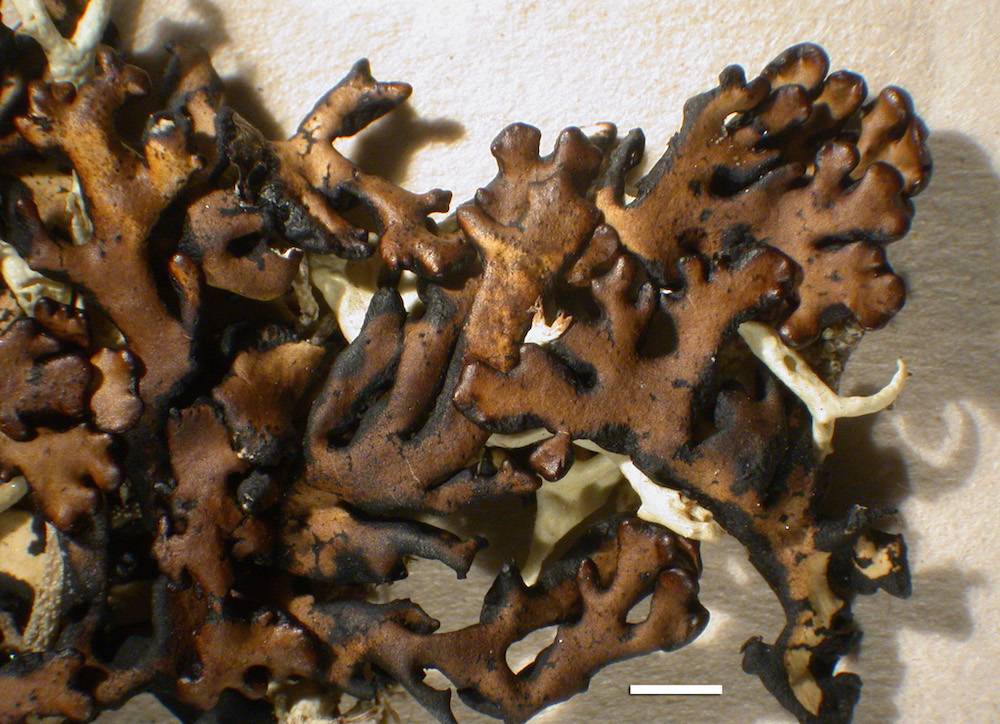
Habit
|

